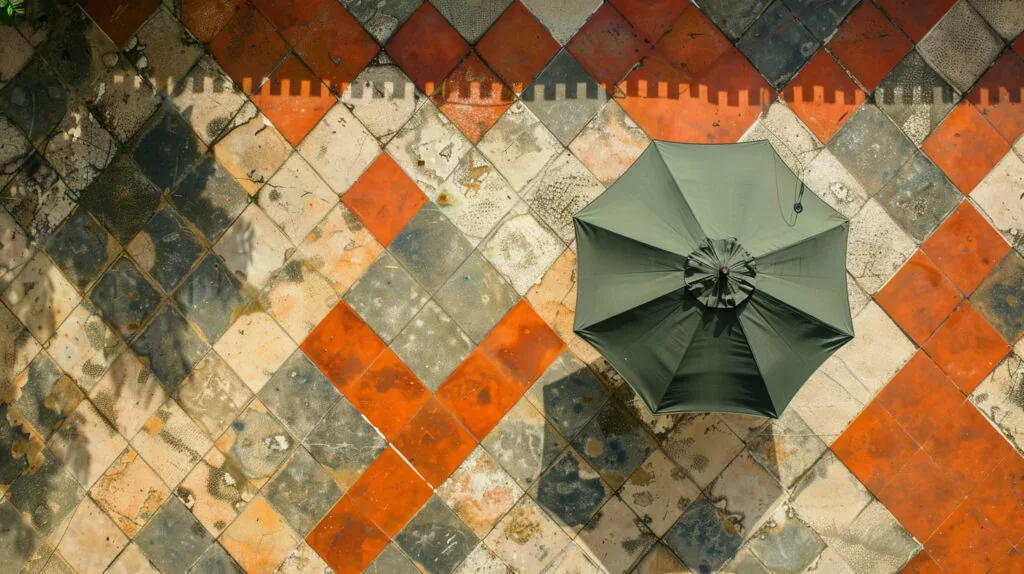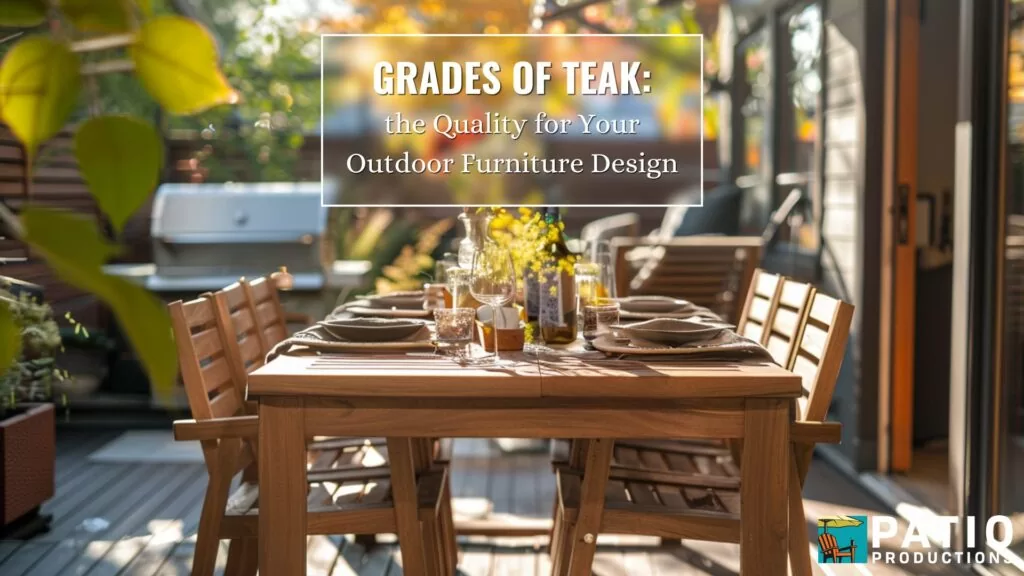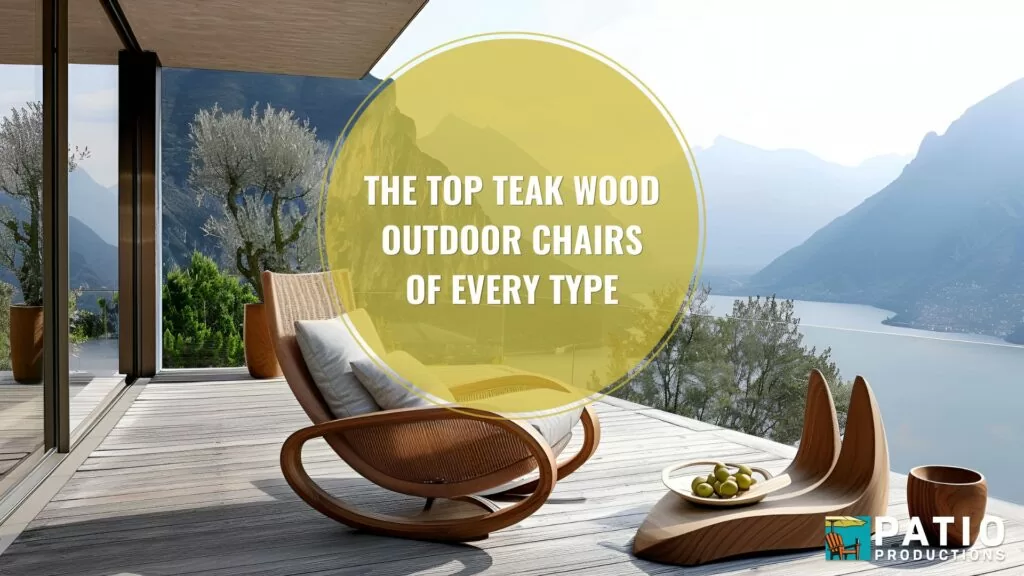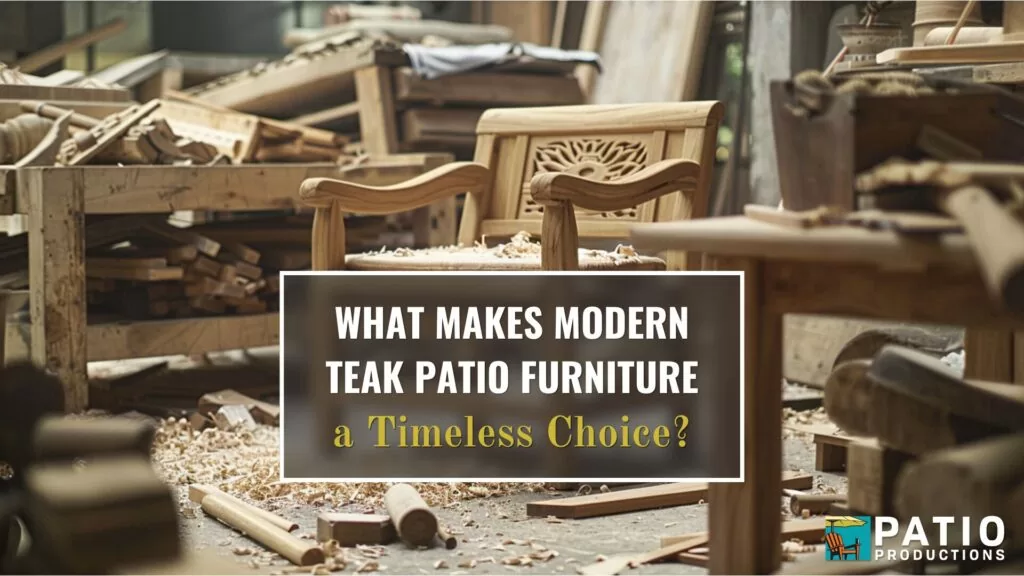A patio umbrella transforms an outdoor space. It makes the area more inviting in the hottest parts of the summer, and it can create a nice atmosphere even during rain.
It’s nice to have the covering, and when you get it just right, it makes your patio look great even while improving the function of the space.
So, how do you choose the right umbrella? A lot of it comes down to getting the right shape, and for that, you have found the perfect quick guide.
| Umbrella Shape | Ideal For | Pros | Cons |
|---|---|---|---|
| Round | Circular tables or seating areas | Even shade coverage, traditional look | Limited coverage for larger tables, challenging to adjust |
| Square | Rectangular tables, contemporary spaces | 30% more shade than round, sleek and stylish | Cumbersome to open/close in tight spaces, may not suit traditional decor |
| Rectangular | Extra-long tables, sprawling seating areas | Ample coverage, can create a cozy, room-like feel | Unwieldy, may require a larger base, not ideal for smaller spaces |
| Oval | Longer tables wanting a traditional look | Balance between round and rectangular shapes | Harder to find, may not provide as much coverage as rectangular |
| Hexagonal | Adding a unique, geometric flair | More coverage than round, maintains cozy feel | Harder to find, higher price tag, not ideal for larger tables |
| Cantilever | Larger or awkwardly shaped spaces, modern look | Shades from any angle, great for larger areas, architectural look | More expensive, may require a heavier base, not ideal for small spaces |
| Octagonal | Larger tables wanting a traditional look, windy conditions | Coverage of square with classic round look, more wind-resistant than round | More expensive than round or square, less coverage than rectangular |
Why Does Umbrella Shape Matter?
You might be thinking, “It’s just an umbrella, who cares about the shape?” Well, let me tell you, the shape of your umbrella can make or break your outdoor space. The right shape can provide optimal shade coverage, withstand windy conditions, and complement your existing patio furniture. Trust me, I’ve made the mistake of choosing the wrong shape before, and it was a disaster. Learn from my mistakes!
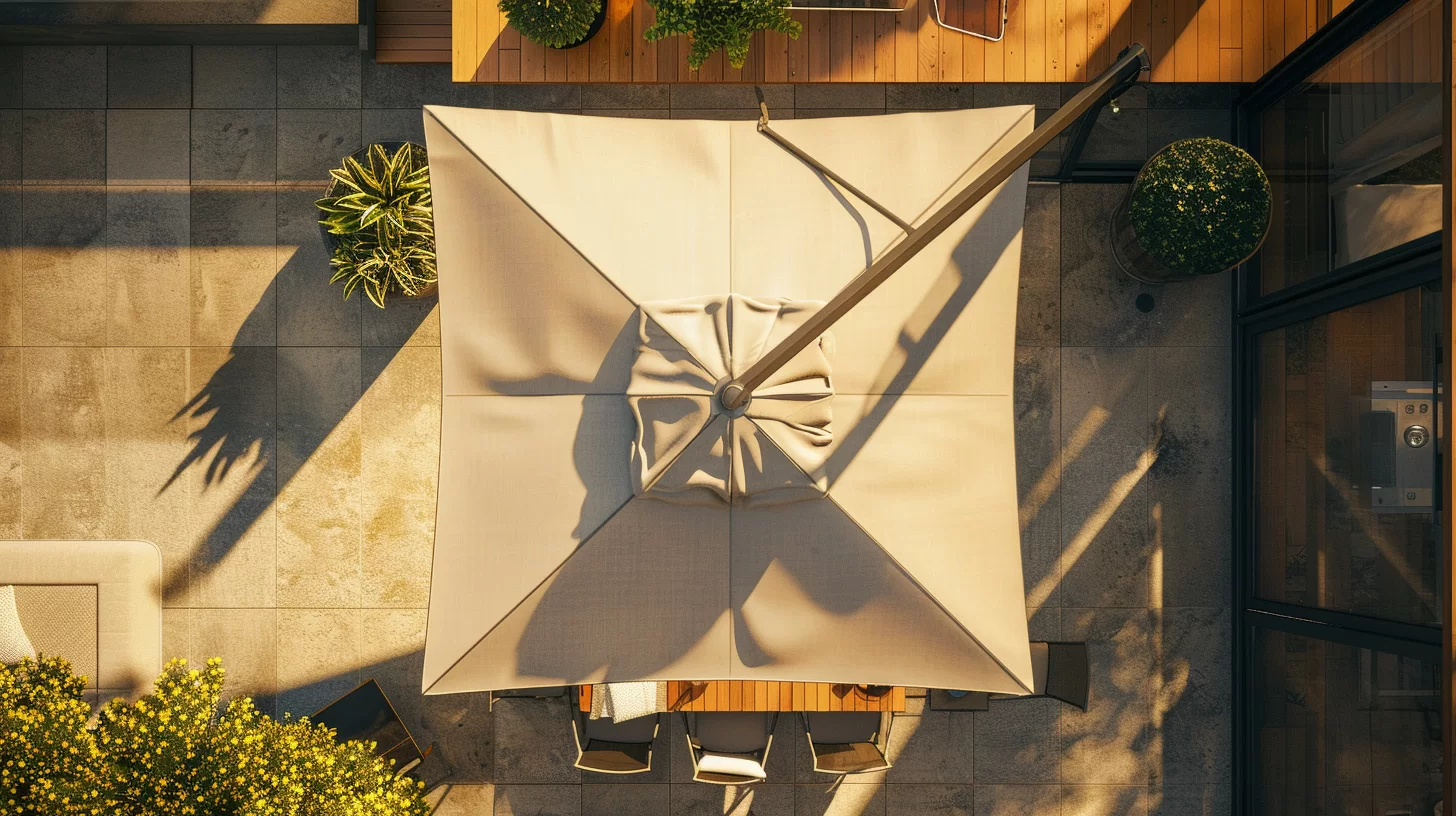
Breaking Down the Most Common Shapes
There are countless umbrella shapes out there, but you’ll find that most patio designs conform to a handful of designs:
- Round
- Square
- Rectangular
- Oval
- Hexagonal
- Octagonal
We can split those shapes into two groups — regular and irregular. In a regular shape, the edges of the umbrella are a consistent distance from the center. You can see how this applies to round, square, hexagonal, and octagonal shapes.
Irregular umbrellas don’t conform to this idea, and they allow for a little more variety and customization in your umbrella coverage.
With that said, let’s look at the specific strengths and weaknesses of each of these shapes.
Round Umbrellas
Pros:
- Great for circular tables or seating areas
- Provide even shade coverage all around
- Traditional, cozy feel perfect for intimate gatherings or lazy afternoons
Cons:
- May not provide as much coverage as other shapes, especially for larger rectangular tables
- Can be more challenging to tilt and adjust
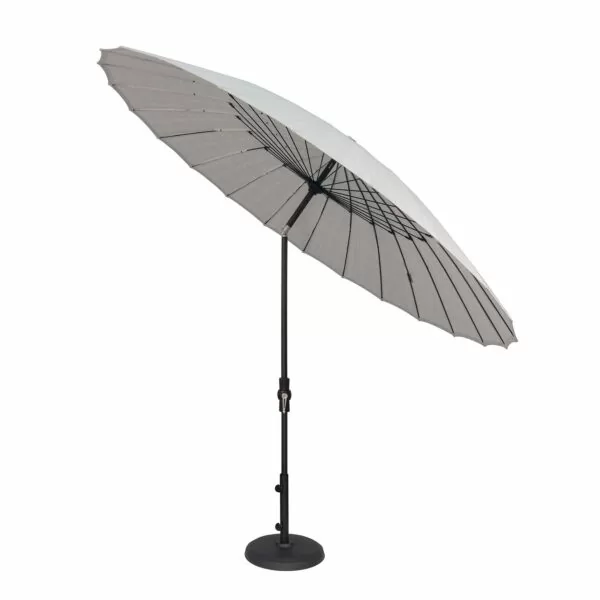
Round umbrellas are easily the most common and popular among all of the shapes. They’ve been around the longest, and they’re a little easier to make. All other things being equal, round umbrellas often cost a little less than the rest (but you can definitely find exceptions to this rule).
If you want a classic look, the round umbrella is the way to go. The circular shape makes it easy to fit the umbrella to most spaces, and it’s easy to get the size right. Make sure the diameter of the umbrella is wide enough to cover the space in mind, and you’re good to go.
Round umbrellas really serve as the baseline for comparison. They don’t have stark strengths or weaknesses that separate them from other shapes.
Square Umbrellas
Pros:
- Sleek, stylish, and perfect for contemporary outdoor spaces
- Provide up to 30% more shade than a round umbrella of the same size
- Ideal for rectangular tables or seating areas
Cons:
- Can be more cumbersome to open and close, especially in tight spaces
- Might look out of place in a more traditional or rustic setting
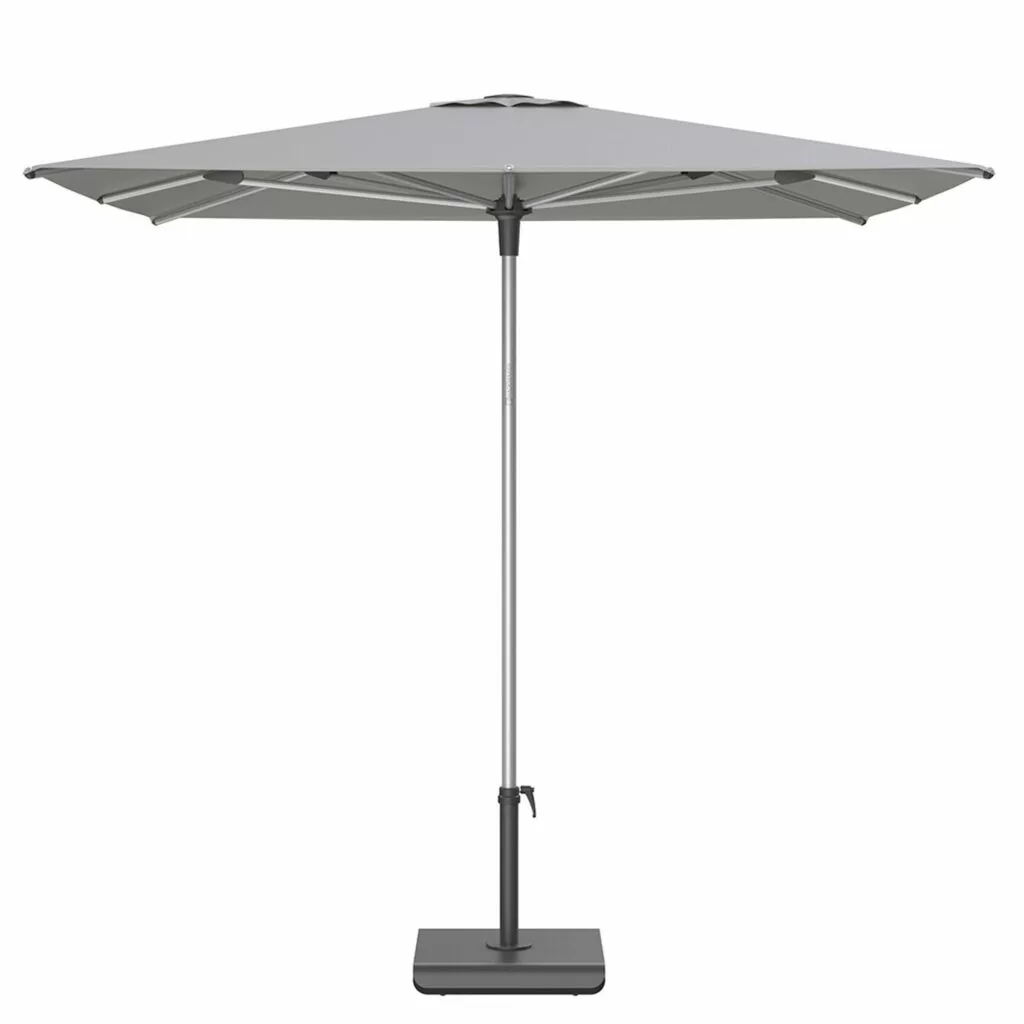
Square umbrellas create a modern, sleek look, and they’re growing in popularity as a result. The biggest advantage to a square umbrella is the regular shape. It’s extremely easy to figure out what size of a square umbrella will fit in a given space Additionally, if you have a small table set, like a bistro set, a square umbrella covers the space nicely.
Rectangular Umbrellas
Pros:
- Perfect for extra-long dining tables, long picnic tables, or sprawling seating areas
- Provide ample coverage
- Can create a cozy, room-like feel when paired with drapes or curtains
Cons:
- Can be unwieldy and may require a larger base for stability
- Might not be the best choice for smaller, more intimate spaces
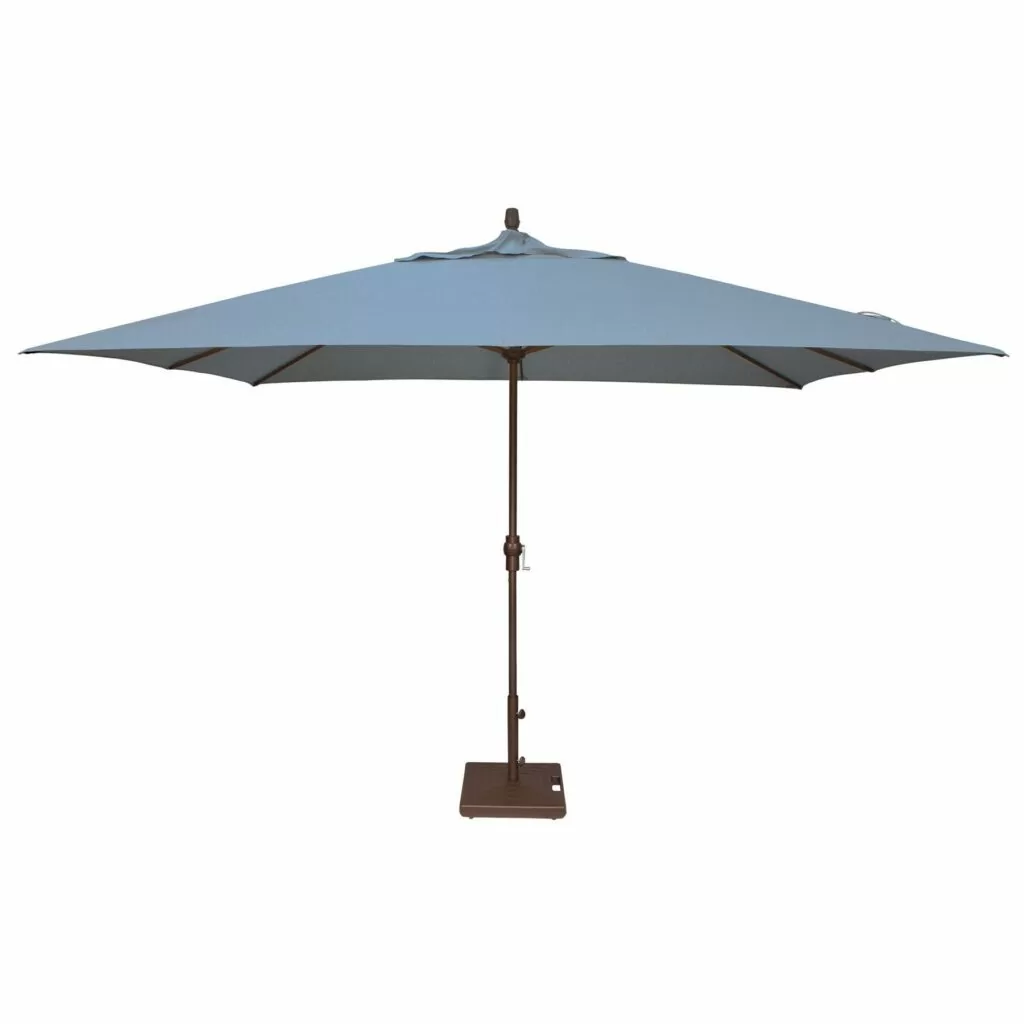
Rectangular umbrellas have similar advantages to square umbrellas with more emphasis on custom fitting. Many tables and seating areas are rectangular by nature. Because of this, rectangular umbrellas can perfectly fit the space, providing the very best coverage.
On the downside, rectangular umbrellas struggle much more in the wind, when the wind catches the long side of the covering. If the usual winds common to your area generally line up with the long edge of where you’re hoping to place your umbrella, then a rectangular umbrella will be a great option.
Hexagonal Umbrellas
Pros:
- Add a unique, geometric flair to any outdoor space
- Offer a bit more coverage than round umbrellas while maintaining a cozy, intimate feel
Cons:
- Harder to find and may come with a higher price tag
- Might not be the best choice for larger tables or seating areas
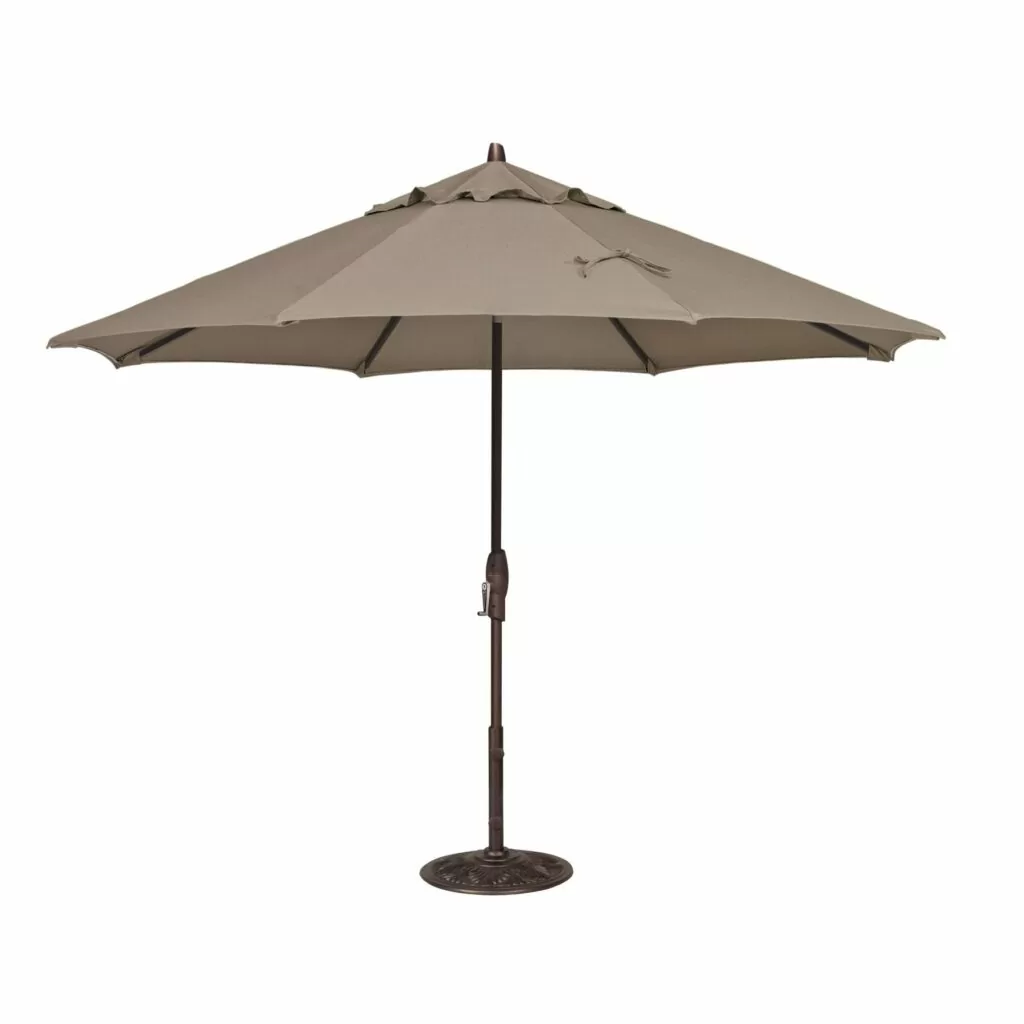
Hexagonal umbrellas return to the regular shape — meaning they are functionally similar to round umbrellas. The primary reason to go with a hexagon over a circle is desired size. Hexagonal umbrellas can maintain a sturdy structure for larger designs compared to circular shapes.
Because of this, you typically find hexagonal umbrellas in the medium to large range of sizes.
Cantilever Umbrellas
Pros:
- Can shade your space from any angle
- Great for larger seating areas or awkwardly shaped spaces
- Offer a modern, architectural look that can elevate any outdoor space
Cons:
- More expensive than traditional umbrellas
- May require a heavier base for stability
- Might not be the best choice for smaller spaces or windy conditions
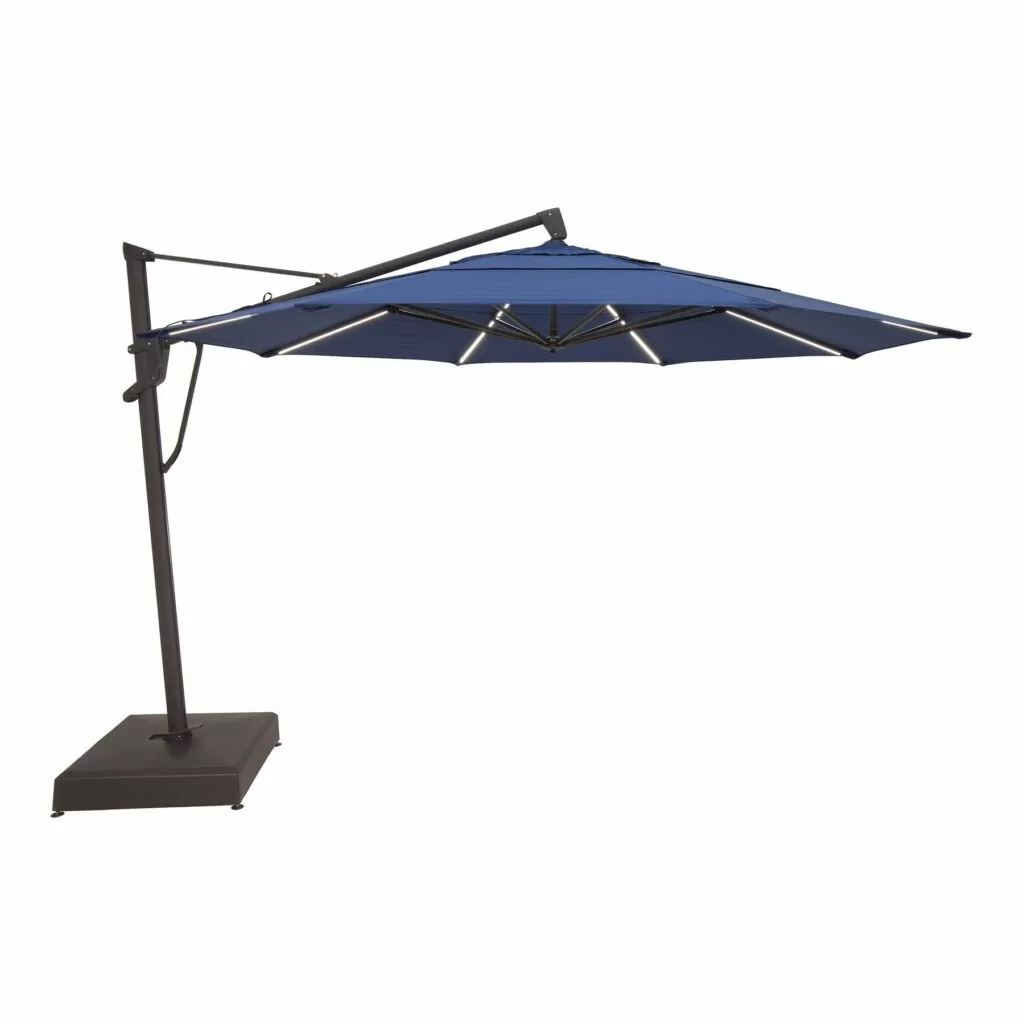
While you’re considering umbrella shapes, you also want to think about the support structure. The standard is to have a center beam hold up the umbrella. That provides excellent support, stability, and balance, but you do have other choices.
Very large umbrellas might use a perimeter structure, looking more like a gazebo in design.
You still have one more option, though.
A cantilever umbrella still attaches to a pole, but the pole is on one side of the umbrella instead of in the center. This allows for a few more aesthetic choices when you pick out your umbrella.
The cantilever design is at its best for conversational spaces. You can remove the center beam that disrupts line of sight and makes conversations feel more comfortable and natural.
Octagonal Umbrellas
Pros:
- Offer the coverage of a square umbrella with the classic look of a round one
- Great for larger tables or seating areas that still want a traditional umbrella feel
- More wind-resistant than round umbrellas, thanks to their eight-sided design
Cons:
- Can be more expensive than round or square umbrellas
- Might not provide as much coverage as a rectangular umbrella of the same size
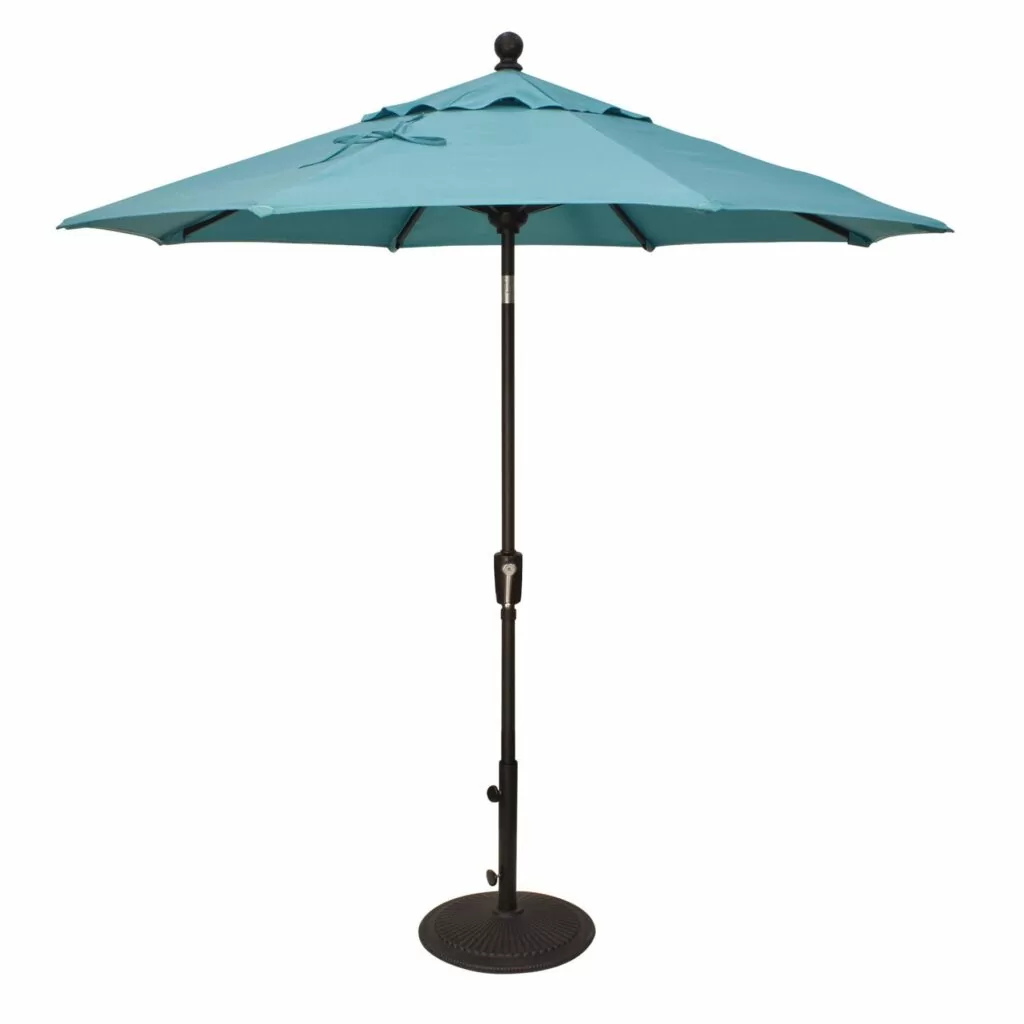
Octagonal umbrellas take the hexagonal concept even further. Again, this is a regular shape that fits most spaces and provides even shade across the patio.
Whereas a hexagon has six spines structuring the umbrella, an octagonal shape adds two more support spines. This allows octagons to stay sturdy over even larger areas. Your largest patio umbrellas tend to be hexagonal.
Sizing Up Your Space
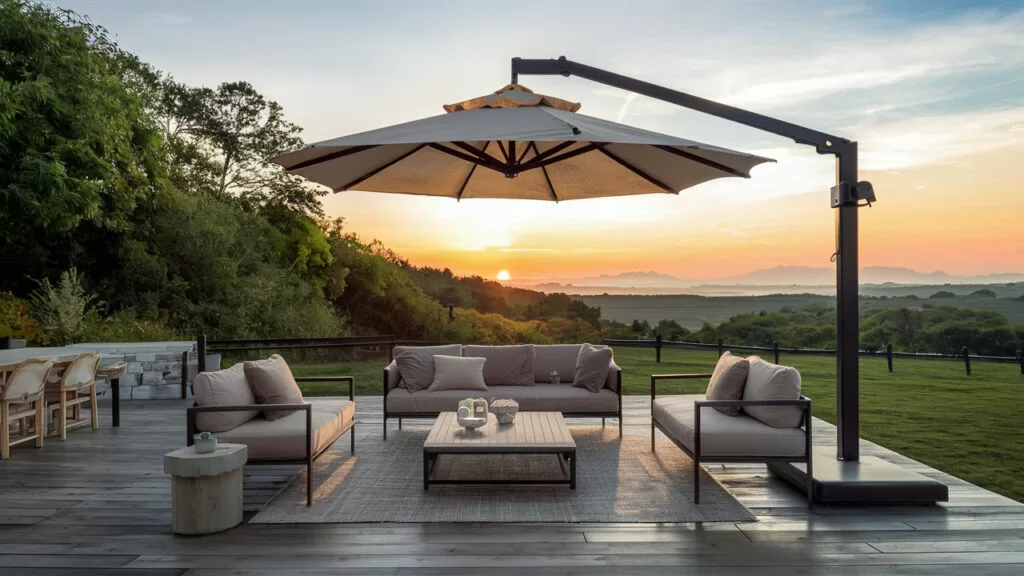
Now that you know the pros and cons of each umbrella shape, let’s talk size. You don’t want an umbrella that’s too small to provide adequate shade or one that’s so big it takes over your entire patio. A good rule of thumb is to choose an umbrella that extends at least 2 feet beyond the edge of your table on all sides. Trust me, you don’t want to be playing footsie with your umbrella base all day.
- For smaller tables or seating areas, a 6-foot to 8-foot umbrella should suffice.
- For larger tables or seating areas, you may want to size up to a 9-foot to 12-foot umbrella.
- For extra-large spaces, a rectangular or cantilever umbrella might be your best bet.
Factors to Consider
Alright, let’s recap. When choosing your patio umbrella shape, keep these factors in mind:
- The size and shape of your table or seating area. Make sure your umbrella is proportional to your space and provides ample shade coverage.
- The style of your outdoor space. Consider whether you want a traditional, modern, or quirky look, and choose an umbrella shape that complements your existing decor.
- The amount of wind your space receives. If you live in a windy area, you may want to opt for a more wind-resistant shape like an octagonal or cantilever umbrella.
- Your budget. Some umbrella shapes, like cantilever or hexagonal umbrellas, may come with a higher price tag. Make sure to factor in your budget when making your selection.


Todd is a co-owner of Patio Productions and has worked extensively in the furniture industry since 2002, when he started a company that designed and manufactured bathroom vanities. He now has a hand in all online business operations, including keeping tabs on industry trends and making sure Patio Productions remains an innovative leader in the outdoor furniture space. He lives just outside of Denver, Colorado with his wife, two boys, and two dogs. They live on a lake where they can make the most of the outdoor lifestyle. His favorite patio furniture sets are his Harmonia Living sectionals.

